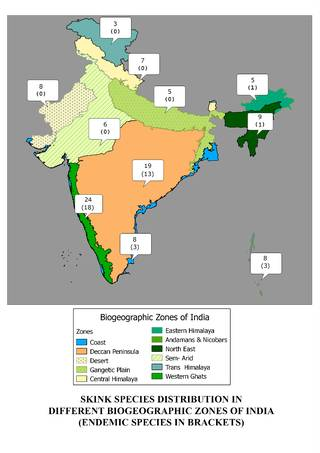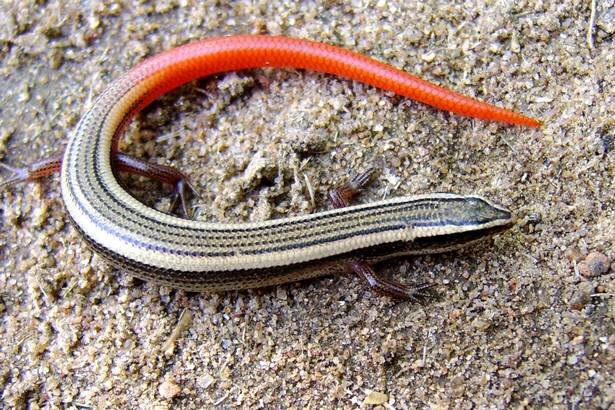Skinks of India | 19 Oct 2020
Why in News
Recently, the Zoological Survey of India (ZSI) brought a study on skinks (a kind of lizard), titled Skinks of India.
Key Points
- Skinks:
- With 1,602 species of skinks across the world, It is the largest family of lizards, having long bodies, relatively small or no legs, no pronounced neck and glossy scales.
- It is found around homes, garages, and open spaces such as sparks and school playgrounds, and around lakes.
- Skinks are non-venomous, highly alert, agile and fast moving and actively forage for a variety of insects and small invertebrates.
- They have a prominent role in maintaining ecosystems, however, not much is known about their breeding habits, and ecology because identification of the species can be confusing.
- In India skinks are found in all kinds of habitats in the country, from the Himalayas to the coasts and from dense forests to the deserts.
- The Study:
- It gives a phylogenetic (evolutionary development) and bio-geographical analysis of distribution of these species in all the 11 bio-geographic zones of India.

- India is home to less than 4% of the skinks across the globe. 62 species of skinks are found in India and about 57% of them (33 species) are endemic.
- India is home to 16 genera of skinks, four of which are endemic. The four genera of skinks are:
- Sepsophis: Sepsophis punctatus is endemic to the northern part of Eastern Ghats
- Barkudia: They are limbless skinks found in the hills and coastal plains of the eastern coast.
- Barkudia insularis is believed to be found only in the Barkud Island in Chilka lake in Odisha.
- Barkudia melanosticta is endemic to Visakhapatnam.
- Kaestlea: They are also known as blue-tailed ground skinks and are endemic to the Western Ghats.
- Ristella: They are also known as Cat skinks and endemic to the southern part of Western Ghats.
- It gives a phylogenetic (evolutionary development) and bio-geographical analysis of distribution of these species in all the 11 bio-geographic zones of India.
Zoological Survey of India
- The Zoological Survey of India (ZSI), a subordinate organization of the Ministry of Environment, Forest and Climate Change was established in 1916.
- It is a national centre for faunistic survey and exploration of the resources leading to the advancement of knowledge on the exceptionally rich faunal diversity of the country.
- It has its headquarters at Kolkata and 16 regional stations located in different geographic locations of the country.

